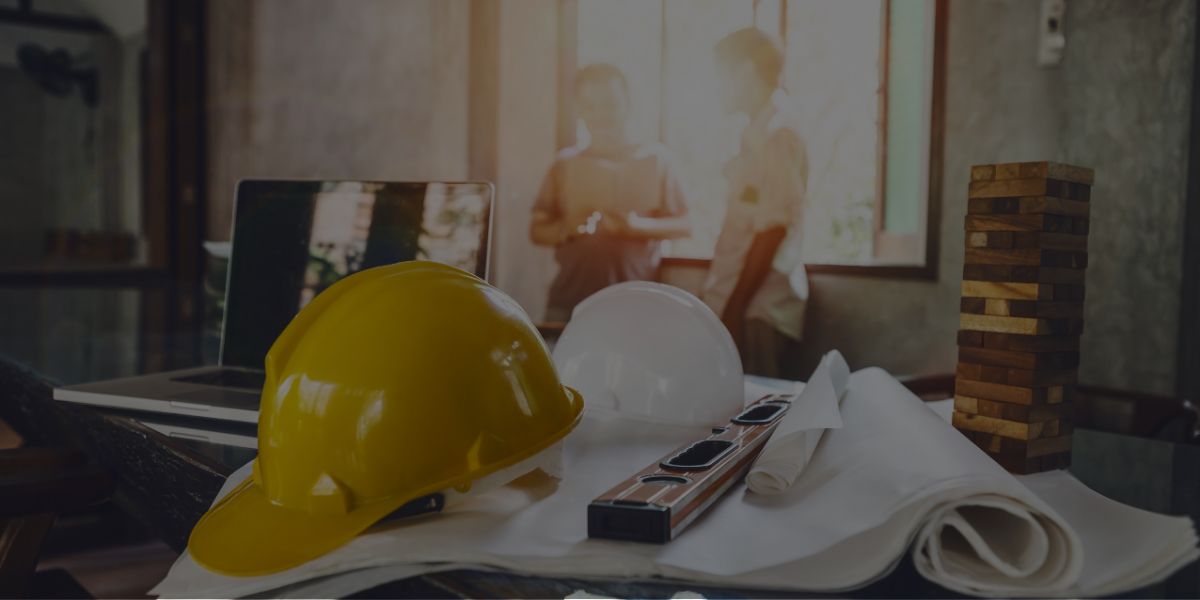It’s no secret that home designers and general contractors often have a complex relationship. As the home designer, you are likely to be in charge of designing beautiful living spaces, while the contractors take care of the construction process. This can create tension between both parties if you don’t communicate effectively – but there are plenty of ways designers can work more effectively with contractors!
So, if you want to make sure that your relationship with the contractor runs smoothly, keep reading to discover 10 ways you can do this ASAP!
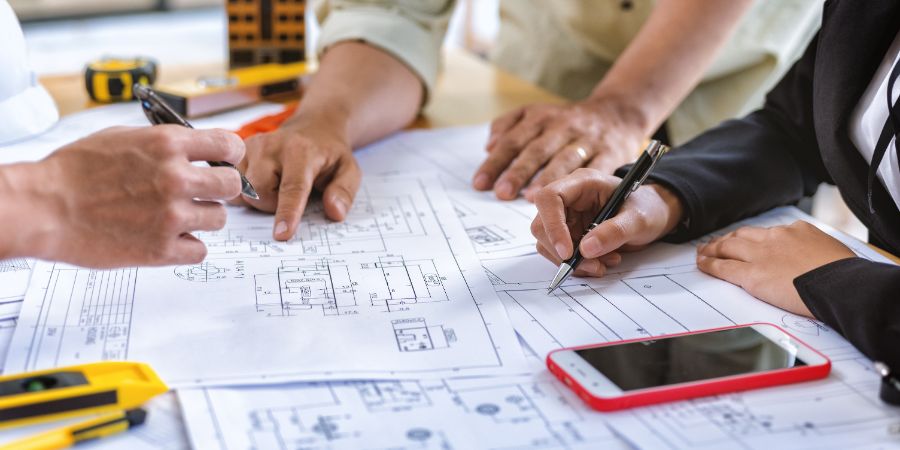
First of All, What is The Difference Between a Contractor and a Designer?
Home Designer vs. General Contractor
It’s important to understand the difference between a contractor and a designer. As a home designer, you are responsible for creating beautiful living spaces. As part of your job, you’ll often collaborate with other professionals – such as architects, landscape designers, and contractors.
On the other hand, a general contractor is responsible for taking care of the physical construction of the client’s home. This can include everything from planning and organizing the details of the project to managing tradespeople on site.
Similarities and Differences Between Home Designers and Contractors
Although home designers and contractors have different roles, there are several similarities between the two. For example, both professionals must have an in-depth understanding of the building and construction industry. This allows them to collaborate more easily on projects – and make sure that all aspects of the project run smoothly.
However, there are also some distinct differences between home designers and contractors, too. For example, a designer may be more focused on the aesthetics of the project, while a contractor is more likely to have their eye on the practicalities.
Not yet a trained, certified home designer? Become one in as little as 3 short months with QC Design School’s self-paced, online certification training!
Do Designers Hire Contractors?
In most cases, designers and contractors collaborate on projects. You, as the designer, may be in charge of the project, while the contractor provides their technical expertise to help make sure that your vision is realized.
So, basically, the answer is no – you don’t typically hire a contractor as your employee.
However, if your client’s project requires construction work, you can outsource this portion of the project to an experienced contractor. This can be beneficial for both parties, as it ensures that the job is done on time and within budget. Additionally, this will help ensure that the construction portion of the project meets all professional and safety standards.
How Does a Designer Work with a Contractor?
Generally speaking, when you’re working with a contractor, you’ll be in charge of the project. Meaning, you’ll need to make sure that all decisions are made according to your client’s wishes. Furthermore, you’ll be the one in charge of ensuring that the work is completed on time and within budget.
The contractor will typically provide their expertise to help make sure the construction portion of the project is done correctly. But it’s important to remember that, at the end of the day, you are responsible for making sure that all aspects of the project are completed according to your client’s wishes.
Where Tension May Arise
Tension can arise between contractors and designers in several different situations. For example, if the contractor does not understand your design concept or is unable to execute it, this can cause tension. Additionally, if the contractor does not follow your instructions or is unable to meet deadlines, this can also lead to tension between the two of you.
So, how can you minimize this tension and work more effectively with contractors?
Here are 10 tips for working more effectively with them!
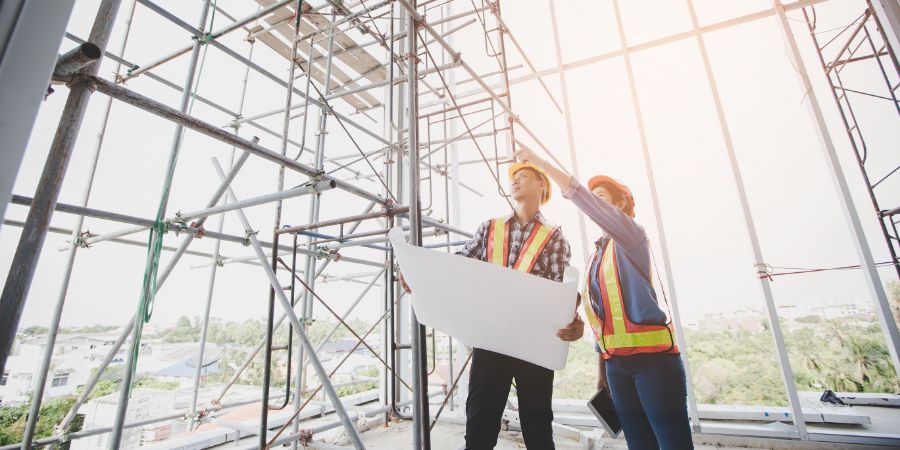
10 Ways Designers Can Work More Effectively with Contractors
#1. Communicate regularly with the contractors!
Lack of (or poor) communication is one of the biggest causes of tension between designers and contractors. If you’re not keeping them up-to-date – or vice versa – it can lead to confusion and misunderstandings.
So, make sure to keep in constant contact with your contractor. This way, you can current and informed on the progress of the project.
#2. Set realistic expectations and deadlines!
Next, be sure to set clear expectations and deadlines for the contractor so that there is no confusion or misunderstanding. This is essential for making sure the project is completed on time and within the client’s budget.
PRO TIP: Make sure to check out these 13 tried-and-true strategies for helping your clients budget their design projects!
#3. Provide detailed instructions!
When it comes to ways that designers can work more effectively with contractors, the more detail you can give them, the better! This is especially the case in terms of describing how you want the project to be completed.
For example, if the general contractor is completing a remodeling project, you might provide a detailed instructions list that outlines the materials and tools needed for each step.
By taking the time to ensure that your instructions are clear, concise, and thorough, the contractor will be able to properly understand your vision. In turn, they can then carry it out properly.
#4. Establish clear budget guidelines!
Another way to ensure that you and the contractor work more effectively together is to establish clear budget guidelines. This way, neither of you are overspending on any part of the project!
Moreover, it’s important to make sure that both parties are aware of who is responsible for what costs. That way, there won’t be any surprises at the end of the project. For example, if you are responsible for purchasing certain materials, make sure the contractor is aware of this.
#5. Clearly define roles and responsibilities!
Clearly defining the roles and responsibilities of each party involved in the project is key. Specifically, make sure to specify who is responsible for what tasks, as well as who has final say when it comes to decisions.
By clearly outlining each person’s role, there will be no disconnect in terms of who is responsible for what. This will help to make sure that the project runs smoothly… And that you and the contractor don’t butt heads at any point!
RELATED: What’s the difference between an interior designer and an interior decorator? Find out here so you can decide which career path is right for you!
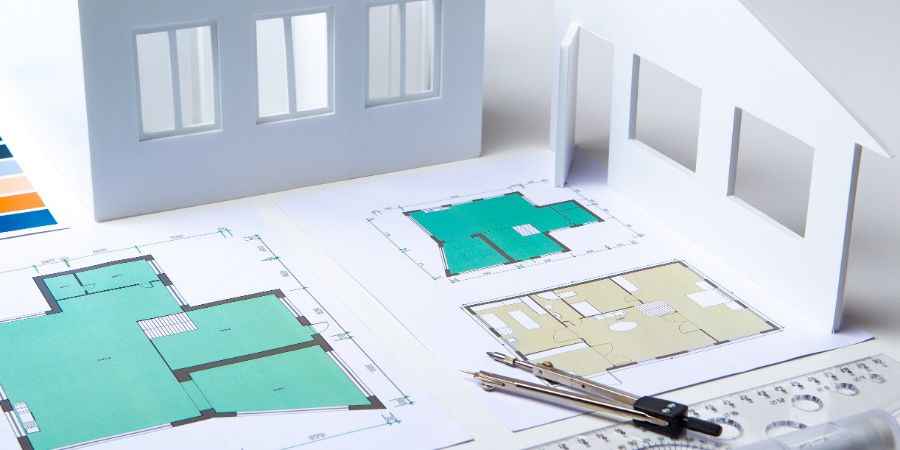
#5: Respect one another’s expertise!
It’s important to remember that the contractor is an expert in his/her field – just like you are in yours. So, respect each other’s expertise and be open to learning from one another. By doing so, it can help to create a collaborative work environment where both parties feel comfortable sharing ideas and suggestions.
And, if there are ever any disagreements or misunderstandings, make sure to have an open dialogue so that the issue can be resolved quickly and professionally.
#6: Document everything!
In order for designers to work more effectively with contractors, it’s important that you document EVERY aspect of the project. This includes everything from budgets and timelines to materials used and progress updates. By creating a detailed file, everyone involved in the project will always have access to critical information – thereby ensuring that everyone is on the same page at all times.
This also ensures that any disputes or misunderstandings can be resolved quickly and easily!
#7: Have a legally binding contract signed by both parties!
Speaking of documenting everything – it’s also important to have a legally binding contract. This contract should be signed by both parties before any work is actually done. By doing this, you ensure that all parties involved are aware of their rights and responsibilities.
And as a result, there is no confusion or misunderstanding down the road. Plus, if any disputes arise, you’ll have the legal documentation to back up your side of the story!
It’s also worth mentioning that if any changes are made to the project at any point, make sure to update the contract accordingly.
PRO TIP: Learn how to write a strong design contract for your business!
#8: Discuss subcontractors with your general contractor!
Often times, contractors will call on subcontractors to help with certain aspects of the project. However, it’s important that you discuss this with your general contractor before any subcontractors are brought in.
This way, you can make sure that the proper protocols and procedures are followed. Plus, it ensures that everyone involved is aware of who is responsible for what tasks.
#9: Provide accurate, detailed floor plans!
As a home designer, part of your job is to know how to create accurate, detailed floor plans. It’s important that you get these right the first time – as any changes or modifications can delay the project and add costs.
That being said, make sure to take your time when creating the initial draft of the floor plans. And if there are any revisions that need to be made, communicate them to your contractor as soon as possible.
This will help to avoid any costly delays or misunderstandings down the road!
PRO TIP: These 6 floor planning apps and software will make creating your floor plans a breeze!
#10: Schedule weekly site visits and meetings with your contractor!
Lastly, make sure to schedule regular site visits and meetings with your general contractor. This is important, as it’ll help both parties stay up-to-date on the project’s progress.
Plus, it gives you the opportunity to ask questions and discuss any issues or concerns that may arise over the course of the project. Keeping everyone in the loop is key. So, make sure to schedule weekly site visits and/or meetings!
And during these meetings and site visits, don’t forget to document everything – as discussed in #6!
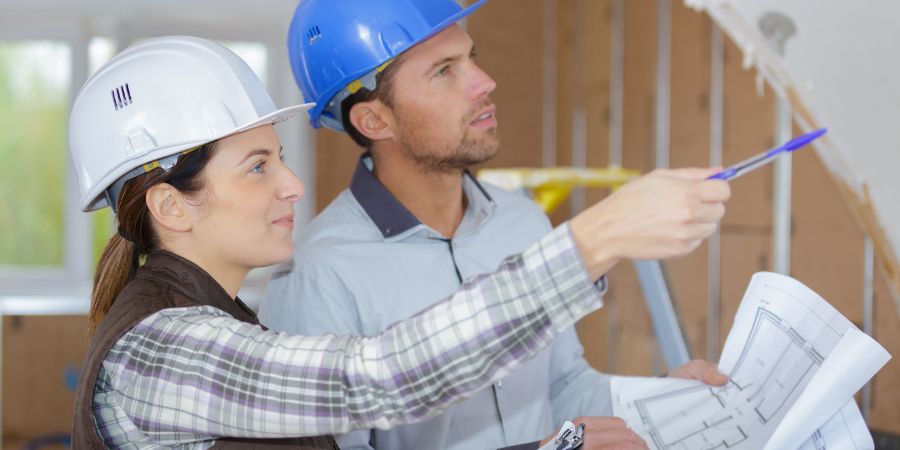
Frequently Asked Questions
Q: So, if designers aren’t the ones regularly hiring general contractors, who is?
A: Typically, it’s the homeowners who hire general contractors. However, designers can have an important role to play in helping ensure that the project runs smoothly.
Q: How does a designer work with a contractor?
A: As a designer, you should always be involved in all aspects of the project. This includes providing accurate, detailed floor plans and meeting regularly with your contractor. You should also document all conversations and have a legally binding contract signed by both parties before any work is done.
Q: What should I do if I’m having trouble working with my contractor?
A: The best thing to do is to communicate openly and honestly with your contractor. If there are any issues or problems, make sure to address them right away. And if all else fails, don’t be afraid to seek outside help – such as a mediator or arbitrator.
Q: How do you interact with contractors?
A: As a designer, it’s important to interact with your contractor on a regular basis. This includes scheduling weekly site visits and/or meetings to discuss the progress of the project, as well as making sure that any legal agreements are signed and followed.
Additionally, it’s important to maintain an open line of communication with your contractor at all times – and to be upfront about any issues or concerns that may arise.
Q: Can contractors be principal designers?
A: Yes, general contractors can be principal designers as well. Essentially, this would mean that the contractor would be responsible for making sure the project is done correctly, safely, and in accordance with applicable laws and regulations. This includes:
- Doing their own research;
- Utilizing their own tools and equipment;
- And any subcontractors they may need to hire.
However, it’s important that a legally binding contract is in place before any work is done. This will help to ensure that both parties are on the same page. Plus, it’ll also ensure that all aspects of the project are completed according to specifications.
Q: Any tips for positively maintaining the home designer and general contractor relationship?
A: Yes! As the home designer, you should be sure to:
- Communicate openly and honestly with your contractor;
- Establish a legally binding contract;
- Document all conversations and meetings;
- And schedule regular site visits and/or meetings.
By following these steps, you can help ensure a positive and productive relationship between you (the designer) and your contractor.

Conclusion
The relationship between home designers and general contractors is an important one. After all, it ensures that projects are completed successfully. Therefore, always strive to work effectively with contractors!
By following these 10 tips, you’ll establish and maintain successful relationships. In turn, you can then ensure that projects are completed on time and according to specifications.
Good luck and thanks for reading!

